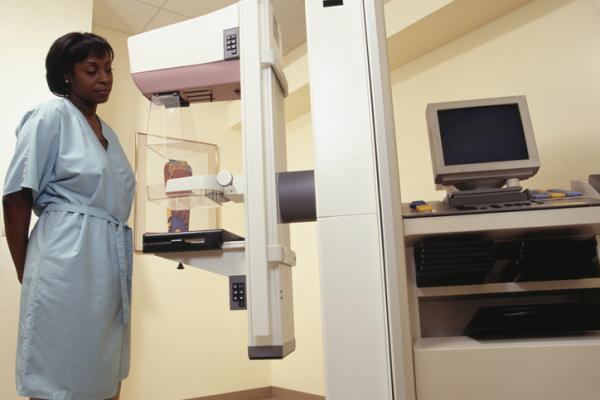
Getty Images
April 27, 2022 — Having dense breasts (more fibroglandular tissue than fatty tissue, as visualized on a mammogram) reduces the sensitivity of mammography by masking breast cancers and carries a 1.6- to 2.0-fold increased independent risk for breast cancer. To inform women about these risks, 38 U.S. states and the federal government have enacted legislation requiring a written dense breast notification (DBN) of a patient’s breast density after a mammogram, but there still is limited evidence about what breast density means, and what the implications are, to women.
According to a new study, while women are receiving these notifications about their breast density, not all recipients are fully understanding what they mean in terms of future health implications. Boston University School of Medicine researchers suggest that knowledge about breast density and its associated risks is partly linked to women’s race/ethnicity and health literacy.
“Our findings, together with prior reports suggest that DBNs alone are not adequately educating women, suggest that development of future notifications warrants further refinement and testing,” says corresponding author Nancy Kressin, PhD, professor of medicine at BUSM.
To assess women’s knowledge about breast density after receiving a notification, the researchers conducted a telephone survey and interviews among a racially/ethnically and health literacy level diverse sample. Although most women responded correctly that breast density is related to the amount of fatty versus connective tissue, the researchers observed significant variations by women’s race/ethnicity, whereby Non-Hispanic White women were less likely to respond correctly than Non-Hispanic Black women.
Only 47 percent of women correctly indicated that having dense breasts increases one’s risk of breast cancer; women with low health literacy were more often correct. Fifty-eight percent of women correctly indicated that breast density is not related to touch, with higher accuracy among non-Hispanic white women and those with greater health literacy. Eighty-seven percent of women recognized that breast density is identified visually via mammogram, with no significant differences in responses by race/ethnicity or health literacy.
Qualitative results revealed additional dimensions of understanding: Some women incorrectly reported that density could be felt, or dense breasts were lumpier, thicker, or more compacted; others identified ‘‘dense’’ tissue as fatty. Interpretations of risk included that breast density was an early form of breast cancer.
“The ultimate goal of DBNs is to educate women about breast density, to guide their future decisions about breast cancer screening. Thus, in-depth characterization of women’s knowledge after receiving a DBN can help ensure that future health communications are accessible and understandable to all recipients,” adds Kressin.
For more information: https://www.bumc.bu.edu/busm/
Related Breast Imaging Information:
Black Women Face Three-fold Increased Risk of Triple Negative Breast Cancers
Black Women Are Receiving Inferior Breast Screening
Hologic Partners with Oprah Winfrey Network to Combat Health Disparities for Black Women
Legislation May Help Identify Breast Cancer Earlier in Certain At-risk Women
Female Breast Cancer Surpasses Lung as the Most Commonly Diagnosed Cancer Worldwide
Johns Hopkins Medicine Expert Weighs Devastating Impact of COVID-19 on Healthcare Workers
Breast Imaging in the Age of Coronavirus
Female Breast Cancer Surpasses Lung as the Most Commonly Diagnosed Cancer Worldwide
Johns Hopkins Medicine Expert Weighs Devastating Impact of COVID-19 on Healthcare Workers


 December 17, 2025
December 17, 2025 









